How to Promote Cognitive Development: 23 Activities & Games
 While reading, writing, and mathematics are important, developing cognitive skills is indispensable for lifelong learning.
While reading, writing, and mathematics are important, developing cognitive skills is indispensable for lifelong learning.
It is imperative that children reach their full cognitive potential, as childhood development and intellectual functioning predict survival, lifelong health, and human capital (Casanova et al., 2021).
Cognition includes the general processes of perception, attention, memory, working memory, pattern recognition, executive function, concept formation and reasoning, intelligence, and academic achievement (Samuel et al., 2017). Just as with their physical bodies, there are specific activities and games we can practice to help children develop cognitive skills, and it is these cognitive development activities that we will share below.
Before you continue, we thought you might like to download our three Positive Psychology Exercises for free. These science-based exercises explore fundamental aspects of positive psychology, including strengths, values, and self-compassion, and will give you the tools to enhance the wellbeing of your clients, students, or employees.
This Article Contains:
- How to Promote Healthy Cognitive Development
- 17 Best Activities for Toddlers and Children
- Is Play Important? 6 Games for Kids & Adolescents
- 3 Worksheets for Psychologists & Teachers
- 4 Questionnaires to Measure Milestones
- Can Toys Enhance Cognitive Development?
- 3 Best Books on the Topic
- Resources From PositivePsychology.com
- A Take-Home Message
- References
How to Promote Healthy Cognitive Development
There are various factors that contribute to healthy cognitive development.
A child’s environment plays an immense role in their cognitive development, and stability is paramount. For example, in a study of migrant children, Lu, Yeung, and Treiman (2020) found that migration offers the potential for higher household earnings; however, in terms of cognitive development, the reduction of parent involvement in the home outweighs the financial benefit. Parental involvement is a big part of cognitive development.
Sleep is critical for cognitive development. Shortened sleep in children and toddlers has a detrimental effect (Gertner et al., 2002; Smithson et al., 2018). Making sure a child gets enough rest is an important part of cognitive development.
Nutrition is crucial for developing brains, and nutrients such as iodine, iron, folate, zinc, vitamin B12, and omega-3 polyunsaturated fatty acids support emergent cognitive functions (Bryan et al., 2004). Additionally, hydration is just as important, as dehydration has the potential to affect cognition negatively (Edmonds & Burford, 2009; Kim, Chun, & Shin, 2020).
When considering activities that support cognitive development, we would be remiss if we failed to include videos games or television shows. It is beneficial for children when the virtual and physical worlds are combined in interactive computer games (Yilmaz, 2016).
Preschoolers have demonstrated academic achievement in English, mathematics, and science because of educational television viewing (Blumberg et al., 2019). Of course, parents and educators must ensure that the content is educational and free of violence.
Adults should also limit the time children spend in front of screens. The American Academy of Pediatrics (2019) recommends less than two hours per day of recreational screen time.
Recess is necessary for brain consolidation, and any kind of brain break can be considered an extension of cognitive work. Additionally, physical exercise positively influences cognition (Donnelly et al., 2016; Samuel et al., 2017). Children need time to process their learning.
17 Best Activities for Toddlers and Children
Below is a list of suggested activities to boost congnitive development. For ease of use, they have been listed according to age.
Newborns
According to Piaget (1964), the first few months of life are characterized by a sensory–motor, pre-verbal stage.
During this stage, newborns may see an object but immediately forget about it once it has been taken away or covered.
1. Mobiles
Tracking should be developed with newborns. Hanging a mobile with simple patterns and sharp contrasts above a crib can help newborns advance their vision.
Giving infants something to focus on may encourage them to move in new ways, especially when they discover that if they move their body, the mobile may also move. This act would show the idea of causality for the baby, which is also an understanding indicative of this age group (Malik & Marwaha, 2021).
2. Rattles
To encourage eye movement and tracking, hold a rattle or any object that catches the baby’s attention about 8–12 inches from the baby’s face, wait for them to focus on it, then slowly move it from side to side.
Their eyes should track the object’s movement. After a few times, the baby may bat at the object as it passes by, which can help to develop hand–eye coordination.
Infants
At this age, object permanence is evolving (Piaget, 1964), and hide-and-seek activities are beneficial.
3. Hide and seek
A game of peekaboo, a jack-in-the-box toy, or hide-and-seek game with an object can help the child develop cognitive skills.
For example, when a child plays hide-and-seek, they are in the beginning stages of understanding that another’s level of knowledge concerning the object is not the same as their own. This is important, especially for real-world social behavior (Peskin & Ardino, 2003).
4. Family photos
Working on memory provides an understanding of how the brain makes a memory.
Help babies strengthen their memory by watching videos of family events or looking through photos of their own recognizable face.
Toddlers
Imaginative play is a helpful way for children to construct symbolic thinking, theory of mind, and counterfactual reasoning (Weisberg, 2015). Although pretend play appears to be pure entertainment for the child, there are distinct connections to cognitive and social skill development.
5. Puppets
Put on a puppet show for the child or practice imaginative play with a doll or stuffed animal.
6. Tea parties
Play pretend. Using toy versions of real-life objects, such as talking to one another on the telephone, arranging a tea party, building a house of blocks using a plastic hammer, or cooking in a toy kitchen, lets the child mimic common activities.
7. Sing songs
Songs are a common element in many preschool classrooms, and rightly so. Integrating song and movement can help develop cognitive skills (Supartini & Weismann, 2020). Additionally, sing-along songs act as pedagogical and didactic tools, enhancing the curriculum (Gluschankof, 2007).
Sing songs that involve counting backward such as “Monkeys Jumping on the Bed” and “100 Bottles of Pop on the Wall.”
Kids, ages: 3–6
8. Mazes
Mazes exercise working memory and executive function and encourage cognitive flexibility. They require the participant to activate spatial learning and memory, graphomotor and visual–motor coordination, foresight, perceptual organization, planning, decision-making, and general reasoning (Venkatesan & Lokesh, 2020).
Mazes use the prefrontal cortex, visual occipital lobe, hippocampus, and motor regions of the brain (Venkatesan & Lokesh, 2020).
9. Puzzles
Jigsaw puzzles help children develop spatial abilities and problem-solving strategies (Doherty, Wimmer, Gollek, Stone, & Robinson, 2021), which aid in cognitive development.
Kids, ages: 7–9
10. Matching games
As working memory is the retention of a small amount of information in a readily accessible form, it has been noted to underpin not only learning and education but also cognitive development (Cowan, 2014).
Memory, Concentration, and Matching games are fun and easy activities for kids to play to encourage cognitive development.
11. Stroop effect games
Stroop effect activities involve reading a word written in a different color or saying the color of the ink and not the actual word. It requires focus and attention.
Stroop found that individuals read color-name words that are printed in a different-colored ink more slowly than if the ink color matches the word (Styles, 1997); for example, reading the word “yellow” written in red ink typically takes longer than reading the word “yellow” written in yellow ink.
Here is an online version of this game.
12. Real-life questions
Encourage higher order thinking skills to fine tune children’s ability to apply knowledge, skills, and values in reasoning, reflection, problem-solving, decision-making, innovating, and creating (Sulaiman, Muniyan, Madhvan, Hasan, & Rahim, 2017). Questions that range from concrete to abstract on Bloom’s Taxonomy, which is a hierarchical classification of the different levels of thinking, can stimulate higher-order thinking.
Ask real-life questions that require analysis. Pose questions that involve critical thinking such as, “Why is it important to wear a seatbelt?” or “Why must we visit the doctor?” Asking questions such as these encourages problem-solving.
13. Sounds
What’s that noise? Practice listening to or playing various sounds, such as birds, instruments, or paper crinkling, and ask the child to identify what is making the noise.
14. Higher-order level questions
Use higher-order level questions where “yes/no” responses cannot be an option. Examples may include instructions that require the learner to describe, create, synthesize, etc.
Adolescents, ages: 10-19
As with younger ages, puzzles are an excellent method of fostering cognitive development in adolescents.
15. Rebus puzzles
These fun puzzles require the individual to determine a common phrase or saying through the use of letters, words, pictures, or numbers. An excellent source is available on Amazon.
16. Sudoku
Sudoku is an activity where the player completes a grid using numbers or symbols.
This captivating game encompasses many cognitive benefits. Symbol-based puzzles offer a significant effect on the logical thinking of students in the dimensional stage of cognitive development, and number-based puzzles benefit students in the vectorial stage of cognitive development (Baek, Kim, Yun, & Cheong, 2008).
17. Crossword puzzles
Crossword puzzles sharpen cognitive abilities and build vocabulary (Hidayati, 2020). Filling in letters to answer the question or address the instructions can be helpful in cognitive development.
Is Play Important? 6 Games for Kids & Adolescents
There is a distinct research-backed correlation between play and learning, as play is an essential part of children’s development (Yilmaz, 2016). Here are a few examples.
1. Threading
Threading is an activity conducive to the preschool classroom (Sunderland, n.d.):
- Give each child a thread and a pile of colored beads.
- Explain that you will make matching strings of beads.
- Children must put their hands on their heads, while the leader calls out two colors.
- Once the leader says, ‘Go’, the children find the beads and thread them.
- Each child has a turn being the leader, picking two colors for the group to find and thread.
- Increase the number of colors the children need to find at a time.
2. Instructions
Give children a “mission.” Giving one-step requests to a toddler, like “bring me the doll,” or “point to the chair,” can help them learn in simple goal-oriented ways. For more advanced learners, include multi-step directions such as, “Crawl under the table, hop around the chair, and bring me the ball.”
3. Now You See It, Now You Don’t
In this game, select an object and describe it with the children. Ask them, “Is it small or is it big? What colors does it have? What shape is this part of the object?” After discussing the object, cover it, and ask the children to recall what the object looked like. Uncover the object to recall more details or check the details stated (Sunderland, n.d.).
4. Repetitive oral games
Repetitive oral games, such as, “I Went on a Picnic” also help to aid memory skills. Each person recalls what the others said and adds their own item. For example, child 1: “I went on a picnic and brought an apple.” Child 2: “I went on a picnic, and I brought an apple and a banana.” Child 3: “I went on a picnic, and I brought an apple, a banana, and a carrot.” And so on.
5. I Spy
One person gives clues describing an object within sight. Another person is charged with trying to figure out what it is. For example, “I spy with my little eyes something big and yellow.”
6. Card games
Card games such as Crazy Eights, Go Fish, and Old Maid are childhood favorites that require the use of working memory. Solitaire is also an excellent option for older children that calls upon both long and short-term memory.
3 Worksheets for Psychologists & Teachers
- Developmental Checklist Birth to Five Years Old by the Early Childhood Direction Center is a checklist with space to indicate the date when each milestone was reached. This document also has “Development Red Flags” to alert the examiner of potential concerns for development.
- Although not a worksheet, the Child Development Institute includes an excellent breakdown of cognitive-developmental milestones from birth to 18 years of age.
- Teachers Pay Teachers has an excellent free source depicting the stages of cognitive development. This visual shows the abilities of children from birth to three years of age for attention and memory, perception and concepts, and reasoning and academics.
Piaget’s theory of cognitive development – Sprouts
4 Questionnaires to Measure Milestones
The Bayley Scales of Infant and Toddler Development is the most commonly used infant development assessment in the United States (Balasundaram & Avulakunta, 2021).
A pediatrician usually administers it; however, anyone who is trained, including occupational therapists and speech and language pathologists, may use this 30–70-minute test. This assessment aims to identify developmental delays in children from 16 days old to begin early intervention (Lobo & Galloway, 2013) and can be purchased through Pearson.
While the Cattell Infant Intelligence Scale cannot be used to determine future intelligence, it can be used as a routine baseline assessment in well-baby clinics to identify intellectual disabilities and developmental delay in one area only (Hooper, Conner, & Umansky, 1986; Koshy & Sharma, 1984). It is easy to administer and score, and also holds the interest of the child.
The Cattell Infant Intelligence Scale was published by the Center on the Developing Child at Harvard University.
The Cognitive Assessment System is recommended for children from 4 to 18 and is used in many schools. The following areas are addressed by this assessment:
- Executive function without working memory
- Executive function with working memory
- Working memory
- Verbal content
- Nonverbal content
The Gesell Scale offers practitioners the opportunity to compare a child’s development to typical growth patterns of children from 2.5 to 9 years old. This video demonstrates the use of the Gesell Scale. The scales can be found via Gesell at Yale.
Can Toys Enhance Cognitive Development?
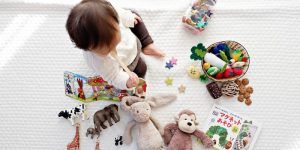
Button and jack-in-the-box toys show cause and effect, as do musical tools such as rattles and drums. Touch and feel books introduce and entertain with various textures. Kitchen and tool toys promote imaginative play.
Those are only a few examples; many items from around the house can also be used. For example, building blocks are great for creative play and stacking, but food-storage containers may work just as well and be even more interesting to the child.
There are a multitude of matching activities and games; for example, matching pot and pan lids may be an activity that benefits both a guardian and a child. Additionally, sorting household items or toys could also be another activity that is mutually beneficial.
While it’s fun to dump things out, sorting and returning objects to their original containers can also help learning and encourage participation; plus it saves from having to clean up.
Although there are countless household objects that can help to promote cognitive development, consider pre-made cognitive toy kits such as SparkleBox or KiwiCo, which are offered in a subscription-style delivery method.
3 Best Books on the Topic
Three books to enhance your understanding of cognitive development.
1. 50 Strategies to Boost Cognitive Engagement: Creating a Thinking Culture in the Classroom – Rebecca Stobaugh
This book aims to help teachers transform their classroom into a climate that encourages active learning and student engagement.
This book also provides 50 strategies for promoting cognitive development and nurturing problem-solving and critical thinking skills.
Find the book on Amazon.
2. The Critical Mind: Enhancing Your Problem Solving, Questioning, Observing, and Evaluating Skills – Zoe McKey
While this book may be personally beneficial to you, many of the concepts can be introduced to children and young adults.
If you yearn to be able to teach students to be self-directed, self-disciplined, self-monitored, and self-corrective thinkers, this book may be for you.
Find the book on Amazon.
3. The Whole-Brain Child: 12 Revolutionary Strategies to Nurture Your Child’s Developing Brain – Daniel Siegel and Tina Payne Bryson
This book is advertised for parents to address behavioral concerns, but it is equally beneficial for teachers and caregivers who want to promote healthy emotional and intellectual development.
The authors provide strategies for dealing with everyday struggles and explain how adults can integrate the entire brain (left, right, upstairs, downstairs) to practice whole-brain growth.
Find the book on Amazon.
Resources From PositivePsychology.com
We have a number of related articles for additional reading.
How to Improve Cognitive Function: 6 Mental Fitness Exercises presents vital information on improving cognitive function and maintaining cognitive fitness, as well as exercises and games that enhance cognitive functioning.
If you are still unconvinced of the significance of cognitive health, What Is Cognitive Health & Why Is It Important to Maintain It? brings a wealth of knowledge.
If you’re looking for more science-based ways to help others enhance their wellbeing, check out this signature collection of 17 validated positive psychology tools for practitioners. Use them to help others flourish and thrive.
A Take-Home Message
It is crucial to understand that each child develops at their own pace and will meet milestones at different times.
Some children may require a more individualized approach and a plan to help support their cognitive development.
Further, try to provide various options. For example, children with several toys or activities to choose from can flex decision-making skills. Present choices with everyday items, such as wearing blue shoes or brown shoes. Giving children a say encourages them to feel confident in their decision-making skills and independence.
Make the student the leader of their own learning. Having well-developed cognitive skills will enable learners to become independent and self-reliant in terms of directing their learning.
As remarked by Plutarch,
“Education is not the filling of a pail, it is the lighting of a fire.”
By helping children develop their attention, perception, memory, logic, and reasoning, you are lighting the fire that will motivate them to become lifelong learners.
We hope you enjoyed reading this article. Don’t forget to download our three Positive Psychology Exercises for free.
- American Academy of Pediatrics. (2019). Adequate sleep, limited screen time can decrease impulsivity in children. Retrieved November 19, 2021, from https://www.aap.org/en/news-room/news-releases/pediatrics2/2019/adequate-sleep-limited-screen-time-can-decrease-impulsivity/
- Baek, Y., Kim, B., Yun, S., & Cheong, D. (2008). Effects of two types of sudoku puzzles on students’ logical thinking. In T. Conolly & M. Stansfield (Eds.), Proceedings of the Second European Conference on Games Based Learning (pp. 19–24). Academic Conferences.
- Balasundaram, P., & Avulakunta, I. D. (2021). Bayley Scales of Infant and Toddler Development. StatPearls. Retrieved November 12, 2021, from https://www.ncbi.nlm.nih.gov/books/NBK567715
- Blumberg, F. C., Deater-Deckard, K., Calvert, S. L., Flynn, R. M., Green, C. S., Arnold, D., & Brooks, P. J. (2019). Digital games as a context for children’s cognitive development: Research recommendations and policy considerations. Social Policy Report, 32(1), 1–33.
- Bryan, J., Osendarp, S., Hughes, D., Calvaresi, E., Baghurst, K., & van Klinken, J. W. (2004). Nutrients for cognitive development in school-aged children. Nutrition Reviews, 62(8), 295–306.
- Casanova, I. G., DiGirolamo, A., Kroker-Lobos, M. F., Ochaeta, L., Ramirez-Zea, M., Martorell, R., & Stein, A. D. (2021). Association between early child development trajectories and adult cognitive function in a 50-year longitudinal study in Guatemala. BMJ Open, 11(6).
- Cowan, N. (2014). Working memory underpins cognitive development, learning, and education. Educational Psychology Review, 26(2), 197–223.
- Doherty, M. J., Wimmer, M. C., Gollek, C., Stone, C., & Robinson, E. J. (2021). Piecing together the puzzle of pictorial representation: How jigsaw puzzles index metacognitive development. Child Development, 92(1), 205–221.
- Donnelly, J. E., Hillman, C. H., Castelli, D., Etnier, J. L., Lee, S., Tomporowski, P., … Szabo-Reed, A. N. (2016). Physical activity, fitness, cognitive function, and academic achievement in children: A systematic review. Medicine & Science in Sports & Exercise Journal, 48(6), 1197–222.
- Edmonds, C. J., & Burford, D. (2009). Should children drink more water? The effects of drinking water on cognition in children. Appetite, 52(3), 776–779.
- Gertner, S., Greenbaum, C. W., Sadeh, A., Dolfin, Z., Sirota, L., & Ben-Nun, Y. (2002). Sleep–wake patterns in preterm infants and 6 month’s home environment: Implications for early cognitive development. Early Human Development, 68(2), 93–102.
- Gluschankof, C. (2007). Research and practice in early childhood music education: Do they run parallel and have no chance to meet? The case of preschool singing repertoire. In Proceedings of European Network for Music Educators and Researchers of Young Children, 27–31.
- Hidayati, N. (2020). Designing the Arabic crossword puzzles for the first, second, and third grade of the “Mambaul Ulum” Islamic elementary school malang. Al-Arabi: Journal of Teaching Arabic as a Foreign Language, 4(2), 245–258.
- Hooper, S. R., Conner, R. E., & Umansky, W. (1986). The Cattell Infant Intelligence Scale: A review of the literature. Developmental Review, 6(2), 146–164.
- Kim, C. S., Chun, W. Y., & Shin, D. M. (2020). Dehydration impairs physical growth and cognitive development in young mice. Nutrients, 12(3), 670.
- Koshy, V., & Sharma, S. D. (1984). Standardisation of the Cattell’s Infant Intelligence Scale in India. Indian Journal of Psychiatry, 26(4), 327–330.
- Lobo, M. A., & Galloway, J. C. (2013). Assessment and stability of early learning abilities in preterm and full-term infants across the first two years of life. Research in Developmental Disabilities, 34(5), 1721–1730.
- Lu, Y., Yeung, W. J. J., & Treiman, D. J. (2020). Parental migration and children’s psychological and cognitive development in China: Differences and mediating mechanisms. Chinese Sociological Review, 52(4), 337–363.
- Malik, F., & Marwaha, R. (2021). Cognitive development. StatPearls. Retrieved November 21, 2021, from https://www.ncbi.nlm.nih.gov/books/NBK537095/
- McKey, Z. (2019). The critical mind: Enhance your problem solving, questioning, observing, and evaluating skills. Author.
- Peskin, J., & Ardino, V. (2003). Representing the mental world in children’s social behavior: Playing hide-and-seek and keeping a secret. Social Development, 12(4), 496–512.
- Piaget, J. (1964). Part I: Cognitive development in children: Piaget development and learning. Journal of Research in Science Teaching, 2(3), 176–186.
- Samuel, R. D., Zavdy, O., Levav, M., Reuveny, R., Katz, U., & Dubnov-Raz, G. (2017). The effects of maximal intensity exercise on cognitive performance in children. Journal of Human Kinetics, 57, 85–96.
- Siegel, D. J., & Bryson, T. P. (2011). The whole-brain child: 12 Revolutionary strategies to nurture your child’s developing mind. Delacorte Press.
- Smithson, L., Baird, T., Tamana, S. K., Lau, A., Mariasine, J., Chikuma, J., … Mandhane, P. (2018). Shorter sleep duration is associated with reduced cognitive development at two years of age. Sleep Medicine, 48, 131–139.
- Stobaugh, R. (2019). 50 Strategies to boost cognitive development: Creating a thinking culture in the classroom. Solution Tree Press.
- Styles, E. (1997). The psychology of attention. Psychology Press.
- Sulaiman, T., Muniyan, V., Madhvan, D., Hasan, R., & Rahim, S. S. A. (2017). Implementation of higher order thinking skills in teaching of science: A case study in Malaysia. International Research Journal of Education and Sciences, 1(1), 2550–2158.
- Sunderland, M. (n.d.). Games to improve working memory. Retrieved November 21, 2021, from https://homeschoolingwithdyslexia.com/wp-content/uploads/Working-Memory-Games.pdf
- Supartini, T., & Weismann, I. T. J. (2020). Development of learning methods through songs and movements to improve children’s cognitive and psychomotor aspects. European Journal of Educational Research, 9(4), 1615–1633.
- Venkatesan, S., & Lokesh, L. (2020). Studying the effects of Porteus Maze Test in children with learning disabilities. International Journal of Asia Pacific School Psychology, 1(2), 117–125.
- Weisberg, D. S. (2015). Pretend play. Wiley Interdisciplinary Reviews: Cognitive Science, 6(3), 249–261.
- Yilmaz, R. M. (2016). Educational magic toys developed with augmented reality technology for early childhood education. Computers in Human Behavior, 54, 240–248.
Let us know your thoughts
Read other articles by their category
- Body & Brain (49)
- Coaching & Application (57)
- Compassion (26)
- Counseling (51)
- Emotional Intelligence (24)
- Gratitude (18)
- Grief & Bereavement (21)
- Happiness & SWB (40)
- Meaning & Values (26)
- Meditation (20)
- Mindfulness (45)
- Motivation & Goals (45)
- Optimism & Mindset (34)
- Positive CBT (28)
- Positive Communication (20)
- Positive Education (47)
- Positive Emotions (32)
- Positive Leadership (18)
- Positive Parenting (4)
- Positive Psychology (33)
- Positive Workplace (37)
- Productivity (16)
- Relationships (46)
- Resilience & Coping (36)
- Self Awareness (21)
- Self Esteem (38)
- Strengths & Virtues (31)
- Stress & Burnout Prevention (34)
- Theory & Books (46)
- Therapy Exercises (37)
- Types of Therapy (64)

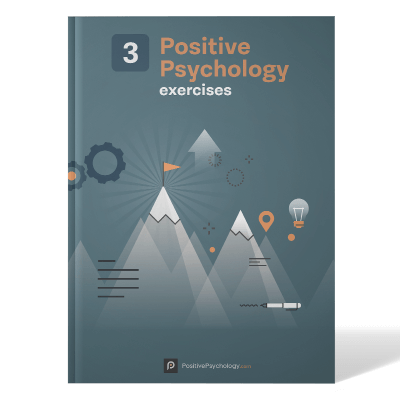
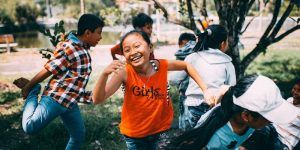
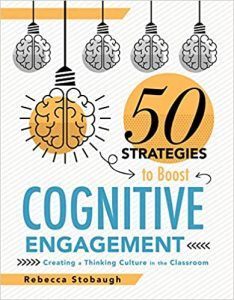
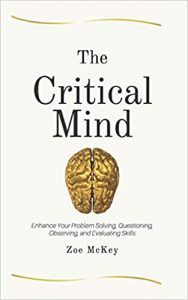
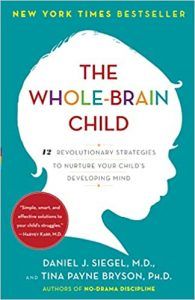
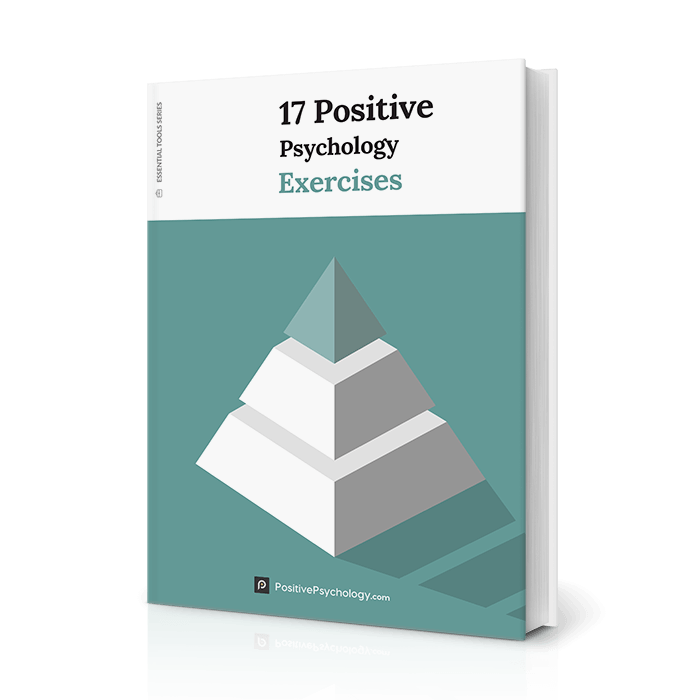
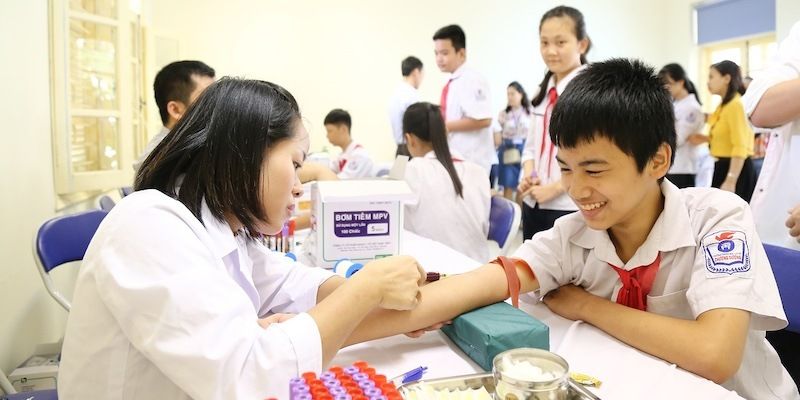


What our readers think
Are use this to refresh in my mind from my degree in secondary social science, education. I’m using the S the early parts for my new six month old granddaughter, and I had forgotten all of this stuff from 27 years ago in college. The next thing I will probably buy is the Piaget book of child development stages of child development, and several of the other sources that you cited. Thanks for the really great touchup on behavior therapy. It has totally changed my outlook on my granddaughter. I knew these things 25 years ago when I was raising a child, but not using them has made it slip from my memory. Now at least, I can give my daughter the short version.
Thanks